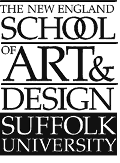
Styles of the American Colonial Period
 |
Styles of the American Colonial Period |
| http://www.iboston.org/buildings/building_index.html | |
| http://www.iboston.org/buildings/building%20resources/links.htm | |
| Vocabulary (Word Document) | |
| Vocabulary | Pictures for these chapters |
| Time Line for American Colonial Styles | |
| Architecture | Furniture |
| Early Colonial 1620-1700
Late Colonial 1700-1720 Early Georgian 1720-1760 Late Georgian 1760-1780 |
Jacobean
1620-1690
William & Mary 1690-1725 Queen Anne 1725-1755 Chippendale 1745-1790 |
Colonial Architecture 1620-1720
Settlers brought their vernacular English architectural traditions with them to the new world. Virgin forests provided the raw materials for the post and beam construction, steeply pitched shingle roofs, clapboard facade and batten doors. Central chimneys are characteristic of the hall and parlor plan typically found in New England. In addition to the medieval English forms we find Garrisons (with a second story overhang) and the Cape Cod style. As homes evolve, saltbox additions provide necessary storage areas.
Georgian Architecture 1720-1780
Classical motifs are added to the colonial form and the in the Late
Georgian style, we see the introduction of the central hall plan with the
chimneys moving to the side walls.
| STYLE | New Furniture Forms |
| Jacobean Furniture | |
| Simple mortis and tenon construction | Court Cupboard or Press |
| Carving, turning, and paining are favorite forms of surface decoration | Connecticut Sunflower chest |
| Split turns, oval bosses and raised panels are also seen | Hadley Chest |
| Brewster Chairs | |
| Carver Chairs | |
| Wagon board Chairs | |
| Butterfly tables | |
| William & Mary Furniture | |
| Introduction of dovetail construction | Lowboy |
| Veneering, cross banding and herringbone boarders | Highboy |
| Bracket feet introduced on case-goods | Bannister back chairs |
| Chair backs do not meet the seat rail. | Slat back chairs |
| Turned legs with stretchers and ball or paintbrush feet | Periwig chairs |
| Queen Anne Furniture | |
| Introduction of cabriole leg with pad, paintbrush, slipper or trifid (drake) foot | Splat back chairs |
| Japanning | Broken scroll, swan neck, and bonnet top pediments |
| Secretary Bookcases | |
| Tea tables | |
| Card tables | |
| Corner cabinets | |
| Kneehole desks | |
| Tripod (pedestal) tables | |
| Chippendale | |
| Introduction of architectural, rocaille, Chinese and gothic motifs | Block front furniture |
| Claw and ball and bracket feet typical on case-goods | Camel back settee |
| Changes to top rail and vertical supports of chairs | bird cage mechanisms |
| Claw and ball feet typical on chairs | piecrust edges to tea tables |
| Syllabus | Egypt, Greece, Rome, Romanesque, Gothic, Byzantine | Renaissance | Baroque | Rococo |